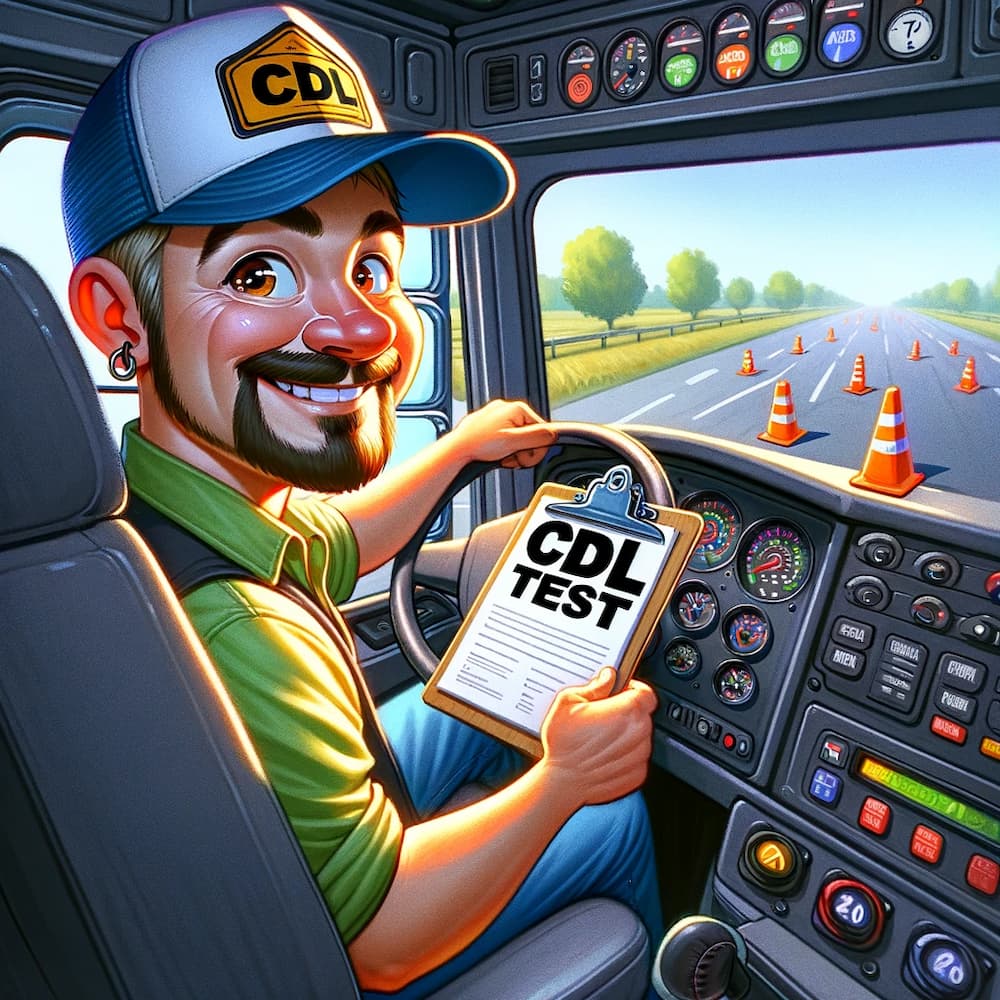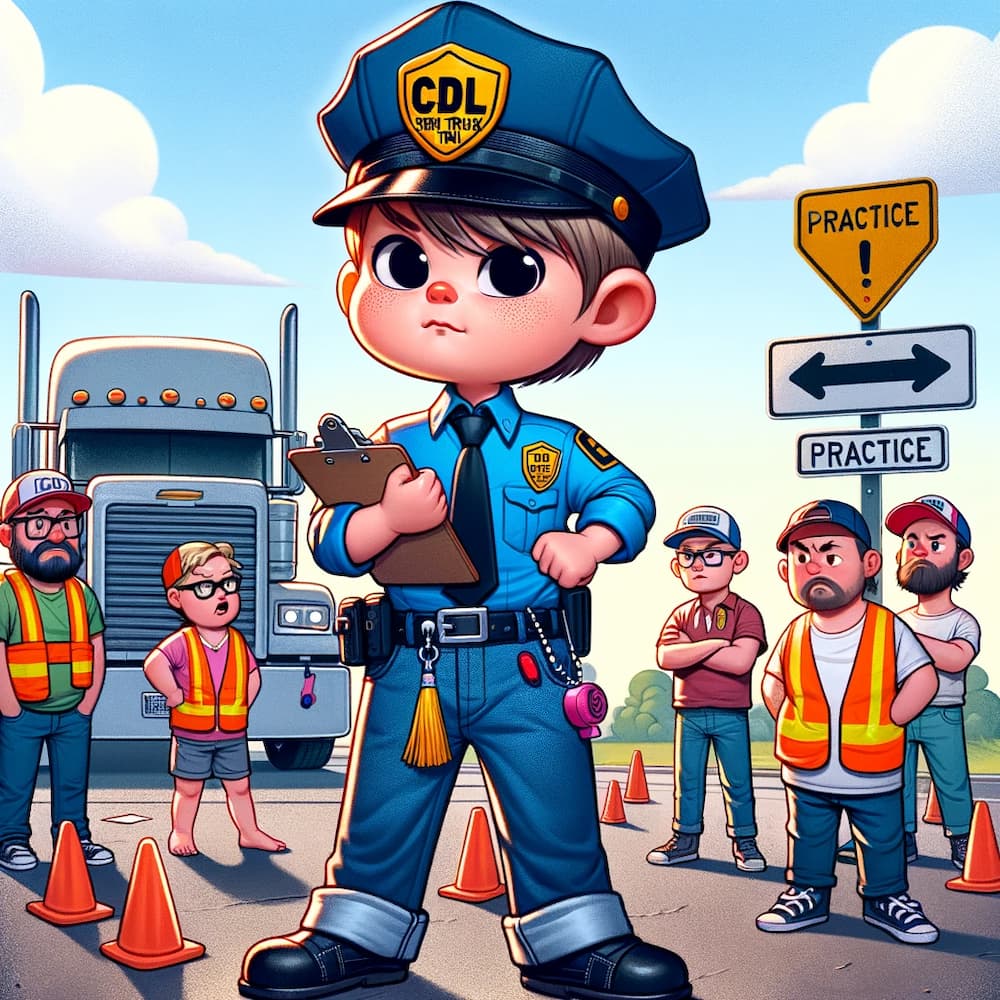.jpg)
Height restriction crashes are devastating.
Height-related collisions involving trucks are a notable concern in the trucking industry. For some statistics, according to the Federal Highway Administration, bridges are hit by semi-trucks over 15,000 times a year. These incidents can lead to significant safety hazards, damages, and disruptions to traffic and transportation.
But who is to blame for height clearance wrecks?
In this article, we’re delving into the real-world experiences of truck drivers regarding height clearance safety as taught in CDL (Commercial Driver's License) training programs as well as on-the-job experiences of truck drivers.
By examining the insights and opinions of experienced truck drivers—both new drivers and veterans of the road—we seek to understand whether or not current CDL training programs adequately prepare drivers for the challenges of height clearance restrictions on the road.
These first-hand accounts provide a unique perspective on the effectiveness of CDL training, and the application of lessons learned as well as highlighting areas where improvements are necessary.
The Focus on Passing Tests in CDL Programs

"I’m of the opinion CDL programs 'teach the test,'" a driver commented, suggesting that many CDL programs may prioritize passing tests over comprehensive, practical training.
Because many schools are not held responsible for their drivers after they receive their CDL certification, this has led some CDL training programs to train drivers merely to pass CDL exams.
This approach could leave drivers ill-prepared for real-world driving scenarios, especially concerning height clearance.
Lacking Height and Road Restriction Training
The lack of specific training on height and road restrictions was evident in one driver's comment:
"[I] wasn't taught anything about heights or road restrictions. I always pull out the tape measure and measure anything taller than my cab."
Reliance on personal judgment rather than formal training underscores a significant deficiency in the curriculum.
The Problem of Inexperienced Trainers

"Inexperienced trainers lead...to inadequately trained new drivers," was a concern raised by a driver, indicating a cycle of insufficient training perpetuated by less experienced instructors.
Another driver echoed such sentiments—emphasizing a root issue with trainers' capabilities:
"It's probably also the limit of the trainers' knowledge. They can't teach rookies things they don't know themselves!"
This insight points to the need for more knowledgeable and experienced trainers in CDL programs.
The False Assumption of Preparedness
Discussing the limitations of CDL training, a driver remarked, "When you get your CDL you’re absolutely not autonomous and still need a lot of training in order to be left alone." This reflects a gap in the training programs where essential skills, such as trailer attachment, are not adequately taught.
This stresses the importance of also teaching truck drivers that they still have a lot to learn. Drivers needs to be encouraged to continue their education—either with additional formal training or being keenly attuned to the lessons that experience brings.
Lack of Practical Application
Once a driver has passed their CDL examination and taken a driving position on the road, all responsibility shifts to their decision to employ these learned skills. Unfortunately, some drivers fail to employ what they have properly learned, as one driver noted:
"It’s taught, the problem is, the knowledge is not practiced.”
The Dunning-Kruger Effect in Trucking
In any professional field, there is a concept called the Dunning-Kruger Effect. This is the idea that the more one learns about a certain subject, the more one realizes how little one actually knows about this given subject.
Conversely, the Dunning-Kruger Effect also means that those with little knowledge or experience fail to consider how much they have yet to learn and may even consider themselves experts.

The Dunning-Kruger Effect is keenly felt in the world of trucking as newer drivers possess the dangerous recipe of CDL-induced confidence and a dash of bloated ego along with improper training from a stunted self-education process.
This recipe can (and often does) result in an alarming amount of rookie mistakes. For this reason, many experienced drivers stress the importance of humility, caution, and a willingness to remain a student of the road.
One veteran driver shared, "When you get your CDL, you are ready to drive...drive and learn. Because even after almost 15 years in this profession, I feel like I'm a newbie."
This perspective highlights the constant learning curve in the trucking profession and the need for ongoing education beyond initial training.
High-Quality Training Programs
So far, this piece may seem like most CDL training programs are either disregarding height restrictions, not taking responsibility for their own students, or utilizing inexperienced trainers. While those certainly exist, they are not the whole of CDL training programs.
Let’s look at a few refreshing and reassuring stories of CDL training programs that adequately prepare students.
"One of the first things they taught us [was to] look far ahead for any and all signs and restrictions."
This shows that some training programs prioritize practical skills such as observational awareness.
Highlighting the presence of effective training programs, a driver in a 22-day academy shared his experiences with a CDL training program with high standards for their training personnel:
“...everyone there that’s involved in teaching, testing, and directing used to be truckers. They require a minimum of one million miles driven."
This suggests that high-quality training programs led by experienced professionals are out there.
What Can Be Done to Enhance Height Clearance Safety?
To increase height clearance safety awareness among truckers, it's essential to address the gaps in CDL training. Continuous education, mentorship programs, regular safety meetings, investment in quality training, use of technology, and fostering a safety culture are all crucial steps toward reducing height-related collisions and enhancing road safety.
Brought To You By My Little Salesman
If you’re in the market for new or used semi trucks for sale, tractor trailers, or an array of parts and accessories for your commercial trucking operation, your friends from My Little Salesman have your back. Since 1958, My Little Salesman has been connecting buyers with sellers of the highest quality commercial trucking gear in North America.
Find your next new or used truck for sale today from My Little Salesman.